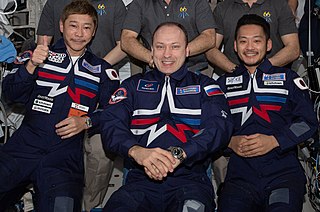
Space tourism is human space travel for recreational purposes. There are several different types of space tourism, including orbital, suborbital and lunar space tourism.

The Canadian Space Agency is the national space agency of Canada, established in 1990 by the Canadian Space Agency Act.

The Rogers Commission Report was written by a Presidential Commission charged with investigating the Space Shuttle Challenger disaster during its 10th mission, STS-51-L. The report, released and submitted to President Ronald Reagan on June 9, 1986, both determined the cause of the disaster that took place 73 seconds after liftoff, and urged NASA to improve and install new safety features on the shuttles and in its organizational handling of future missions.

Richard Alan Searfoss was an American aviator who was United States Air Force colonel, NASA astronaut and test pilot.

The Vision for Space Exploration (VSE) was a plan for space exploration announced on January 14, 2004 by President George W. Bush. It was conceived as a response to the Space Shuttle Columbia disaster, the state of human spaceflight at NASA, and as a way to regain public enthusiasm for space exploration.

Private spaceflight refers to spaceflight developments that are not conducted by a government agency, such as NASA or ESA.
Lockheed Martin Space is one of the four major business divisions of Lockheed Martin. It has its headquarters in Littleton, Colorado, with additional sites in Valley Forge, Pennsylvania; Sunnyvale, California; Santa Cruz, California; Huntsville, Alabama; and elsewhere in the United States and United Kingdom. The division currently employs about 20,000 people, and its most notable products are commercial and military satellites, space probes, missile defense systems, NASA's Orion spacecraft, and the Space Shuttle external tank.
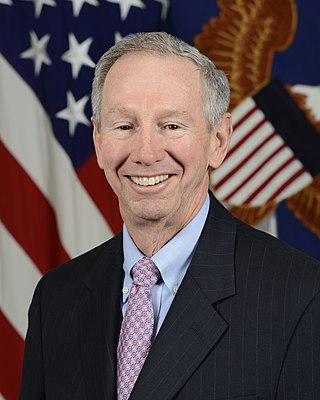
Michael Douglas Griffin is an American physicist and aerospace engineer who served as the Under Secretary of Defense for Research and Engineering from 2018 to 2020. He previously served as Deputy of Technology for the Strategic Defense Initiative, and as Administrator of NASA from April 13, 2005, to January 20, 2009. As NASA Administrator Griffin oversaw such areas as private spaceflight, future human spaceflight to Mars, and the fate of the Hubble telescope.

Soichi Noguchi is a Japanese aeronautical engineer and former JAXA astronaut. His first spaceflight was as a mission specialist aboard STS-114 on 26 July 2005 for NASA's first "return to flight" Space Shuttle mission after the Columbia disaster. He was also in space as part of the Soyuz TMA-17 crew and Expedition 22 to the International Space Station (ISS), returning to Earth on 2 June 2010. He is the sixth Japanese astronaut to fly in space, the fifth to fly on the Space Shuttle, and the first to fly on Crew Dragon.
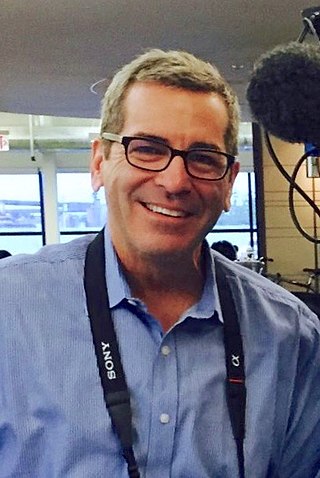
Miles O'Brien is an independent American broadcast news journalist specializing in science, technology, and aerospace who has been serving as national science correspondent for PBS NewsHour since 2010.

John Cornelius Houbolt was an aerospace engineer credited with leading the team behind the lunar orbit rendezvous (LOR) mission mode, a concept that was used to successfully land humans on the Moon and return them to Earth. This flight path was chosen for the Apollo program in July 1962. The critical decision to use LOR was viewed as vital to ensuring that man reached the Moon by the end of the decade as proposed by President John F. Kennedy. In the process, LOR saved time and billions of dollars by efficiently using the rocket and spacecraft technologies.

A boilerplate spacecraft, also known as a mass simulator, is a nonfunctional craft or payload that is used to test various configurations and basic size, load, and handling characteristics of rocket launch vehicles. It is far less expensive to build multiple, full-scale, non-functional boilerplate spacecraft than it is to develop the full system. In this way, boilerplate spacecraft allow components and aspects of cutting-edge aerospace projects to be tested while detailed contracts for the final project are being negotiated. These tests may be used to develop procedures for mating a spacecraft to its launch vehicle, emergency access and egress, maintenance support activities, and various transportation processes.
Criticism of the Space Shuttle program stemmed from claims that NASA's Space Shuttle program failed to achieve its promised cost and utility goals, as well as design, cost, management, and safety issues. Fundamentally, it failed in the goal of reducing the cost of space access. Space Shuttle incremental per-pound launch costs ultimately turned out to be considerably higher than those of expendable launchers. By 2011, the incremental cost per flight of the Space Shuttle was estimated at $450 million, or $18,000 per kilogram to low Earth orbit (LEO). In contrast, the comparable Proton launch vehicle is said to cost as little as $110 million, or around $5,000 per kilogram to LEO, despite not being reusable.
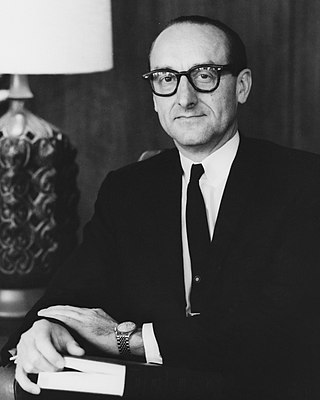
George Edwin Mueller, was an American electrical engineer who was an associate administrator at NASA, heading the Office of Manned Space Flight from September 1963 until December 1969. Hailed as one of NASA's "most brilliant and fearless managers", he was instrumental in introducing the all-up testing philosophy for the Saturn V launch vehicle, which ensured the success of the Apollo program in landing a man on the Moon and returning him safely to the Earth by the end of 1969. Mueller also played a key part in the design of Skylab, and championed the Space Shuttle's development, which earned him the nickname, "the father of the Space Shuttle."
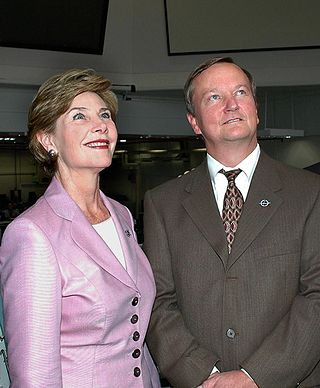
Michael D. Leinbach is an aerospace engineer who was the former Shuttle Launch Director at NASA's John F. Kennedy Space Center (KSC), Florida. He was responsible for activities in the overall shuttle launch countdown, including planning, policy, and execution.

The National Aeronautics and Space Administration is an independent agency of the U.S. federal government responsible for the civil space program, aeronautics research, and space research. Established in 1958, NASA succeeded the National Advisory Committee for Aeronautics (NACA) to give the U.S. space development effort a distinctly civilian orientation, emphasizing peaceful applications in space science. NASA has since led most American space exploration, including Project Mercury, Project Gemini, the 1968–1972 Apollo Moon landing missions, the Skylab space station, and the Space Shuttle. NASA currently supports the International Space Station and oversees the development of the Orion spacecraft and the Space Launch System for the crewed lunar Artemis program, the Commercial Crew spacecraft, and the planned Lunar Gateway space station.

The National Space Council is a body within the Executive Office of the President of the United States created in 1989 during the George H. W. Bush administration, disbanded in 1993, and reestablished in June 2017 by the Donald Trump administration. It is a modified version of the earlier National Aeronautics and Space Council (1958–1973).

Livingston L. Holder Jr. is a former USAF astronaut in the Manned Spaceflight Engineer Program during the mid-1980s. He was assigned to fly as a military payload specialist on the Space Shuttle, but could not fly in space due to the Challenger accident in 1986.
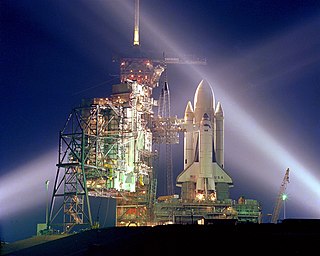
Hail Columbia is a 1982 American IMAX documentary film about NASA's Space Shuttle program, particularly the first Space Shuttle, Columbia. The film was directed by Graeme Ferguson.
















